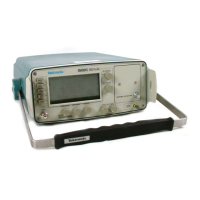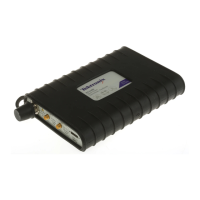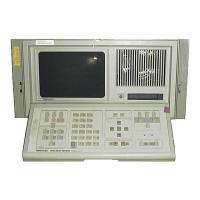Introduction
1720/1721
1–5
Table 1–2: Vector mode (cont.)
Characteristic
Step
number
Supplemental informationPerformance requirement
Subcarrier regenerator
NTSC pull–in range
PAL pull–in range
Pull–in time
Phase shift with subcarrier freq-
ency change (NTSC)
Phase shift with subcarrier freq-
uency change (PAL)
Phase shift with burst amplitude
change
Phase shift with input channel
change
Phase shift with VAR GAIN control
Phase control range
Burst jitter
±50 Hz of F
sc
±10 Hz of F
sc
±2° from F
sc
to (F
sc
+ 50 Hz) or F
sc
to
(F
sc
– 50 Hz)
±2° from F
sc
to (F
sc
+ 10 Hz) or F
sc
to
(F
sc
– 10 Hz)
±2° from nominal burst amplitude to
±6 dB.
±0.5°
±1° as gain varies from 3 dB to –6 dB.
<0.5°
Subcarrier regenerator freeruns in
absence of appropriate signal.
Reference can be burst of either
displayed signal or external reference
signal.
PAL units are tested to 10 Hz, but
typically lock to within 50 Hz.
Within 1 second, with subcarrier
frequency within 50 Hz (10 Hz for PAL)
od F
sc
.
With EXT REF selected.
360° continuous rotation.
With 140 IRE (1 V PAL) composite
video input. INT or EXT referenced.
6
6
6
6
7
7
7
Display characteristics
Differential phase
Differential gain
Position control range, horizontal
Position control range, vertical
Clamp stability
Variable GAIN range
±1°
±1%
At least .25” (6 mm) from center.
At least .25” (6 mm) from center.
0.0156” (0.4 mm) or less.
+14 dB to –6 dB of 75% color bar
preset gain.
Measured with 140 IRE (1 V PAL)
linearity signal (5 step, 10 step, or
ramp) with 40 IRE (300 mV PAL) of
subcarrier.
Center spot movement with PHASE
control rotation.
+5 to –0.5 amplitude.
8
9
9
10

